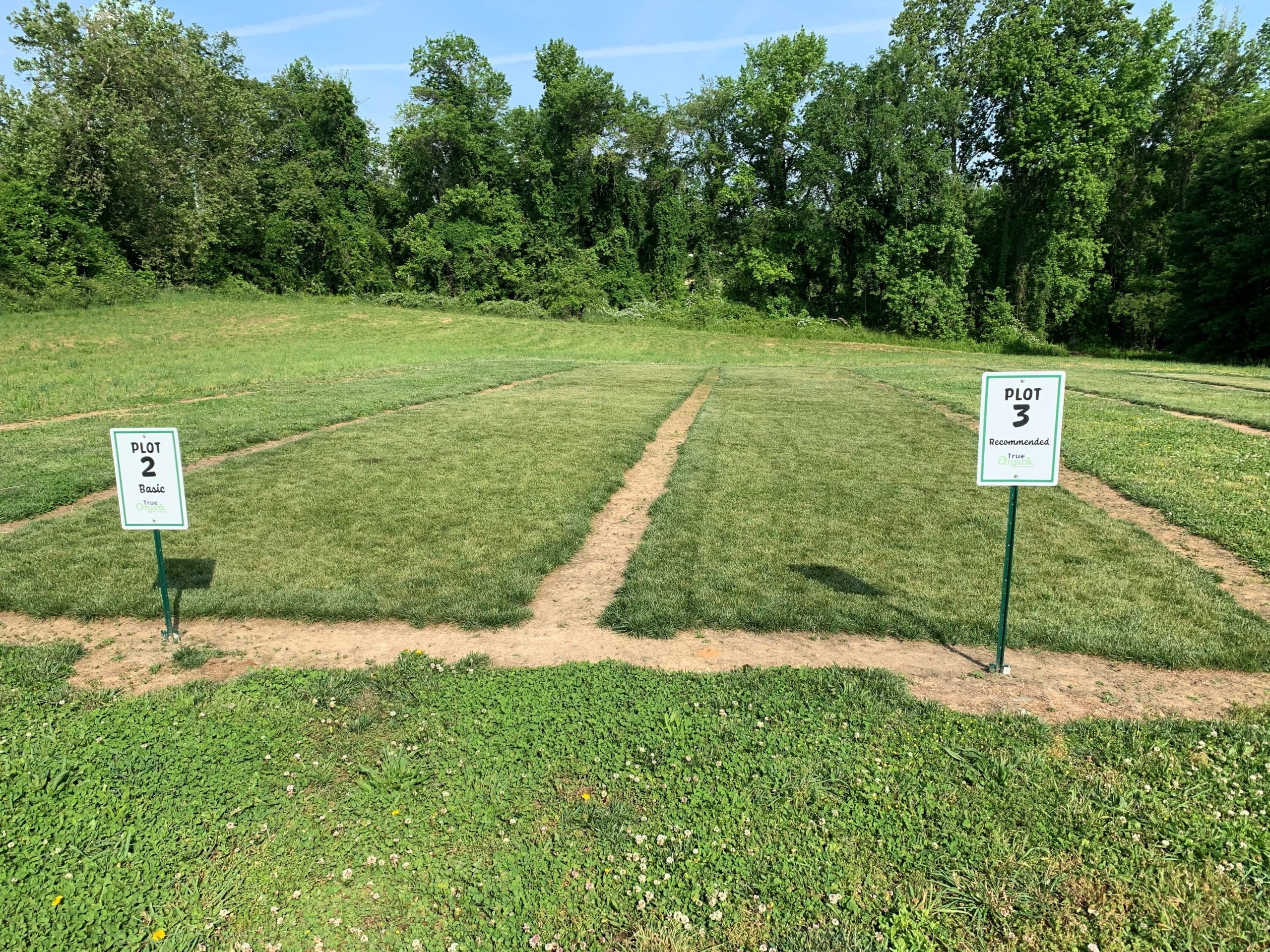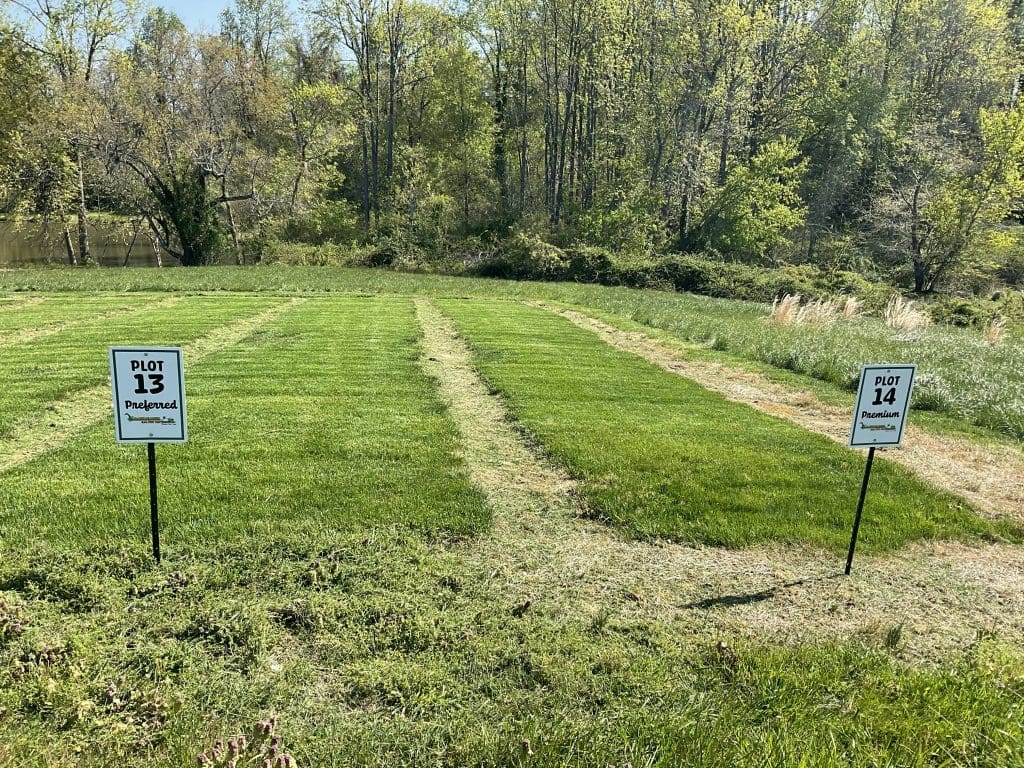
Blades of Green, based in Edgewater, Maryland, consider themselves soil scientists, so naturally, they have a lawn lab for all their testing.
Brad Leahy, vice president of Blades of Green, says they started their lawn lab five years ago when the organic movement started in Montgomery County. He says they wanted to start testing to find the best organic products and application methods available.

The lawn lab is located at Blades of Green’s first location. Leahy says while they outgrew the space, they still own the 10 acres of land.
Their lab consists of 14 test plots that are 12 feet wide and 100 feet long on two 10,000 square feet of sections of land. One of the areas is flat and the other one is sloped to help them answer runoff questions when it comes to products.
“We’re seeing the grass right next to it that’s outside of the test area is not greener than the grass near there,” Leahy says. “It’s the same, so we see no evidence of runoff when applied properly and the grass is at the right height because it’s so dense. Nothing’s getting through.”
Uses for the Lawn Lab
While Blades of Green started their test plots for their organic program, the lawn lab now serves as a test space for their three organic packages and their three traditional lawn care packages. Leahy say they always want to be on the cutting edge with their products and want to test new products before rolling them out to their customer base.
There are also test plots where they mimic what homeowners do to their lawns, including cutting the grass too short.

“We wanted to be able to see what homeowners are doing and so we could actually show them the effects of improper maintenance,” Leahy says.
There is also a control plot, which only receives proper cultural maintenance and no products are used on it.
“It is almost perfect,” Leahy says. “What we learned is cutting as high as possible, over three and a half inches makes a huge difference, which everybody knows that. But you can visually see it and show it you know that’s important.”
Every year they test various variables such as different products, max and low application amounts, and application techniques.
“We also test the timing of applications,” Leahy says. “We go out when it’s 95 degrees, like extreme temperatures and low temperatures as well. What’s the effective rate of this product? How long will it take to show results if it’s really cold? Are you going to damage the property if it’s really hot? So those are some of the big learning lessons.”
He says they purposefully go out and apply above the label’s suggested temperature range to see what the product does.
“If we can see that on a customer’s property, then we know well maybe got a little too hot today that day and we need to look back at when did we call production because it’s going to be extremely hot,” Leahy says. “Again, especially in the organic field, it’s very temperature sensitive, these products.”
With their organic test plots, they have also learned how you apply the product matters just as much.
“There are different kinds of wands,” Leahy says. “There are different types of spray nozzles. There’s different pressure. There are all kinds of different water droplet sizes, and it certainly matters in organic is what we found. The actual technique, the application method and the tools you’re using makes a difference.”
Because the lab is surrounded by farm fields, the plots are exposed to external weed pressure, which also helps them gauge the efficacy of certain products. Leahy says they typically make one change a year to their programs as they find small improvements they can make.
Leahy says they can also take advantage of the space to conduct off-season employee training.
Tips for Success
Leahy acknowledges not every lawn care company has the land to conduct their own test plots, but if you do, a lawn lab can be extremely valuable if you commit the time. He says it’s all about time and dedication in order to see results.

He encourages having one person, like a service manager, in charge of the lab for consistency. Blades of Green has had one lawn service manager responsible for all of the applications since they started the lawn lab and they have one of their organic specialists handling the organic lawn care testing plots.
He also advises taking lots of photos so you can track the difference in the plots. Leahy says it’s important to focus on the economics of which product or method is more efficient or getting a better result.
With pricing rising everywhere, Blades of Green is always looking for a way to keep costs in line by using better techniques, equipment and products. Sometimes it may be more expensive, but they get better longer-lasting results.
“What’s more expensive – products or labor?” Leahy says. “Labor is way more expensive. We’re looking more for ‘Are there labor savings in these products?’ meaning fewer re-treats. If this was my property, would I be calling for a service call?”

